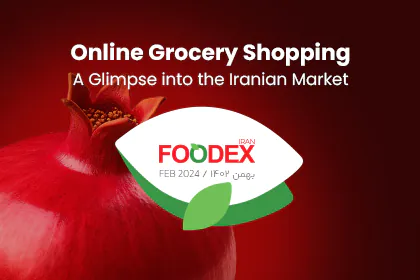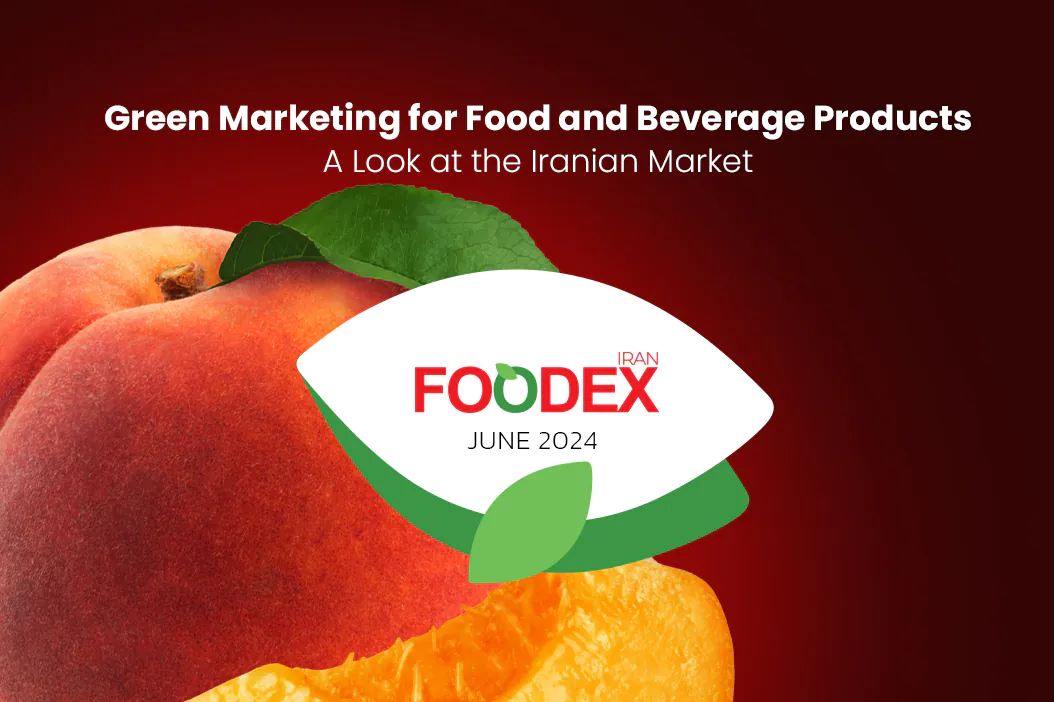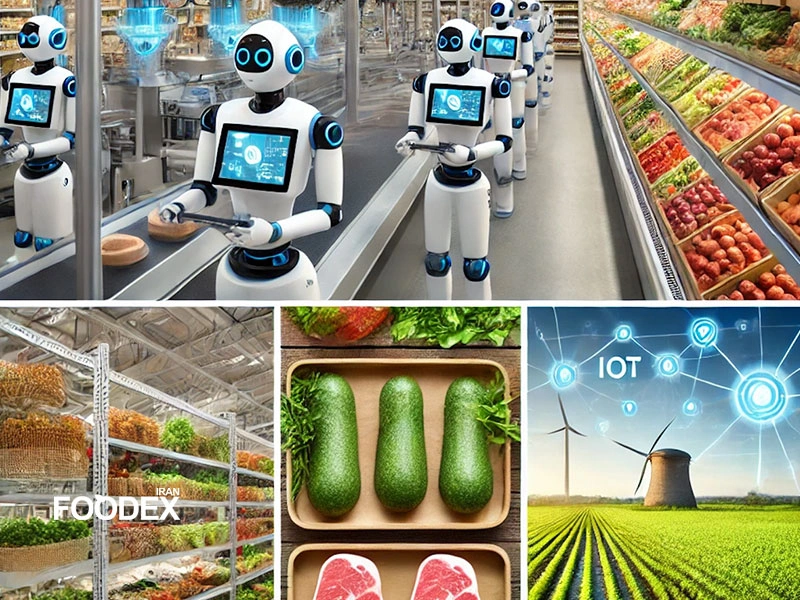From the production of food items in factories and production centers to their consumption by end-users, there is a time gap. During this period, methods must be employed to ensure the quality, freshness, and shelf life of food products. One such method is proper packaging. With technological advancements, innovative food packaging technologies have replaced traditional methods. In this article from Foodex Magazine, we aim to introduce the latest technologies in food packaging. Stay with us until the end.
Food Packaging Technology
Innovative technologies in food packaging ensure the quality and safety of products throughout their shelf life. Packaging protects food from environmental factors such as microbes, insects, light, heat, oxygen, water vapor, odors, dirt, and dust. Professional packaging produced with cutting-edge technologies can represent a brand and increase its popularity. In the past, traditional methods were used for food packaging, but gradually, with industrial advancements, innovative technologies have taken over.
Features of Food Packaging
The packaging method should possess certain features to be recognized as innovative in the food industry. Some of these features include:
Meeting Consumer Needs: Packaging should be convenient and user-friendly.
Environmental Compatibility: Materials should be eco-friendly and sustainable.
Increasing Shelf Life: Innovative packaging can extend the freshness and longevity of food products.
Cost Reduction: Efficient methods can reduce packaging costs.
Preventing External Contaminants: Packaging should block external factors that could spoil the food.
Resistance to Pressure and Impact: Durable packaging protects the product during transportation and handling.
Enhancing Freshness and Quality: Innovative packaging can maintain and even improve the quality of food products.
What Are the Innovative Technologies in Food Packaging?
With advancements in the food industry, packaging has also evolved, introducing new methods to preserve quality and ease of use. Below are several innovative technologies in food packaging.
Water-Soluble Packaging
Water-soluble packaging is an example of innovative technology in food packaging. This packaging has an interesting structure that can dissolve in hot water. Made from safe materials, it is environmentally friendly. It’s suitable for packaging items like cereals, soups, and powdered drinks. However, its application is limited due to the need for secondary packaging to prevent contamination.
Active Packaging
Active packaging is one of the innovative methods in the food industry. It involves using additives and biopolymer properties to increase the shelf life of food products. Biopolymers like chitosan prevent fungal and bacterial activities, keeping food from spoiling.
These materials create coatings like bottle caps, bags, and more to prevent changes in the taste and appearance of food. Currently, natural materials are used in this packaging method to avoid health risks. Active packaging is utilized across various food industries.
Intelligent Packaging
Intelligent packaging is an innovative technology that provides useful information about the quality, safety, and characteristics of food products. The use of natural pigments in intelligent packaging causes features of food products to be displayed through color changes. This packaging can monitor food products, detecting and recording harmful substances. Intelligent packaging systems can be classified into three main categories:
Indicators: Display qualitative and quantitative information about food through color changes. Examples include oxygen indicators, freshness indicators, and time-temperature indicators (TTI).
Sensors: Detect small molecules of contaminants, allergens, pathogens, or counterfeit substances in food. Gas sensors and biosensors are examples.
Data Carriers: Used for identification, tracking, theft prevention, and anti-counterfeiting, rather than evaluating food quality. Barcodes and QR codes are well-known data carriers.

Differences Between Active and Intelligent Packaging
The increasing demand for high-quality and fresh food is driving the market towards active and intelligent packaging technologies. These methods meet consumer needs and alleviate producer concerns. But what sets them apart?
In active packaging, natural biotic additives are used to ensure the shelf life, freshness, and safety of food products without posing health risks. Intelligent packaging, on the other hand, is designed to monitor and control the quality and quantity of food products, indicating safety or spoilage through methods like color changes.
Micro-Packaging
Micro-packaging is another innovative method in the food industry, produced using nanotechnology. It utilizes a very thin material called micro-film, which has numerous applications in preserving food and extending shelf life. It effectively retains gases in carbonated drinks.
Micro-film is composed of a soluble polymer, clay particles, and water, with about 70% water content. These materials are environmentally friendly and are currently produced by various companies. Micro-packaging prevents food spoilage and blocks external particles and air molecules.
Self-Cooling and Self-Heating Packaging
Unlike other packaging methods designed to increase durability, self-cooling and self-heating packaging technologies aim to facilitate food consumption. These are newer and less developed compared to other methods.
Self-heating packaging can warm food without external heat sources. It uses calcium oxide or magnesium dioxide and water to create an exothermic reaction. This packaging is used in military sectors and coffee packaging.
Self-cooling packaging employs an endothermic reaction to cool the package instantly. Technologies like heat pumps act as heat transfer fluids in this packaging.

Antimicrobial Packaging
Microbial growth causes foodborne illnesses and reduces shelf life by altering texture, color, and smell. Antimicrobial packaging, an innovative technology in food packaging, prevents the growth of microorganisms. Significant progress has been made using the following materials to activate antimicrobial properties:
Organic Acids and Salts: Sorbic acid, benzoic acid, acetic acid, propionic acid, etc.
Plant Extracts and Essential Oils: Sage extract, eucalyptus, thyme, mustard, basil, etc.
Enzymes: Lactoperoxidase, chitosan, gelatin, etc.
Inorganic Nanoparticles and Metal Oxide-Based Materials

New Technologies in Frozen Food Packaging
Frozen food packaging employs various technologies to preserve quality. Packaging must resist low temperatures and remain intact after freezing. Materials used should not react with the food. Freezing prevents spoilage, and packaging serves as a protective layer. Materials used include:
- Glass and Plastic Containers
- Thick Cardboard
- Cellophane Papers
- Plastic Bags
Conclusion
In this article from Foodex Magazine, we introduced innovative packaging methods in the food industry. In the competitive market of food production, brands seek to offer higher-quality products, necessitating packaging that ensures product quality and freshness. The food market is gradually embracing innovative packaging methods, resulting in greater customer satisfaction.
References
Frontiers in Sustainable Food Systems
Food Dive
Deskera Blog






















